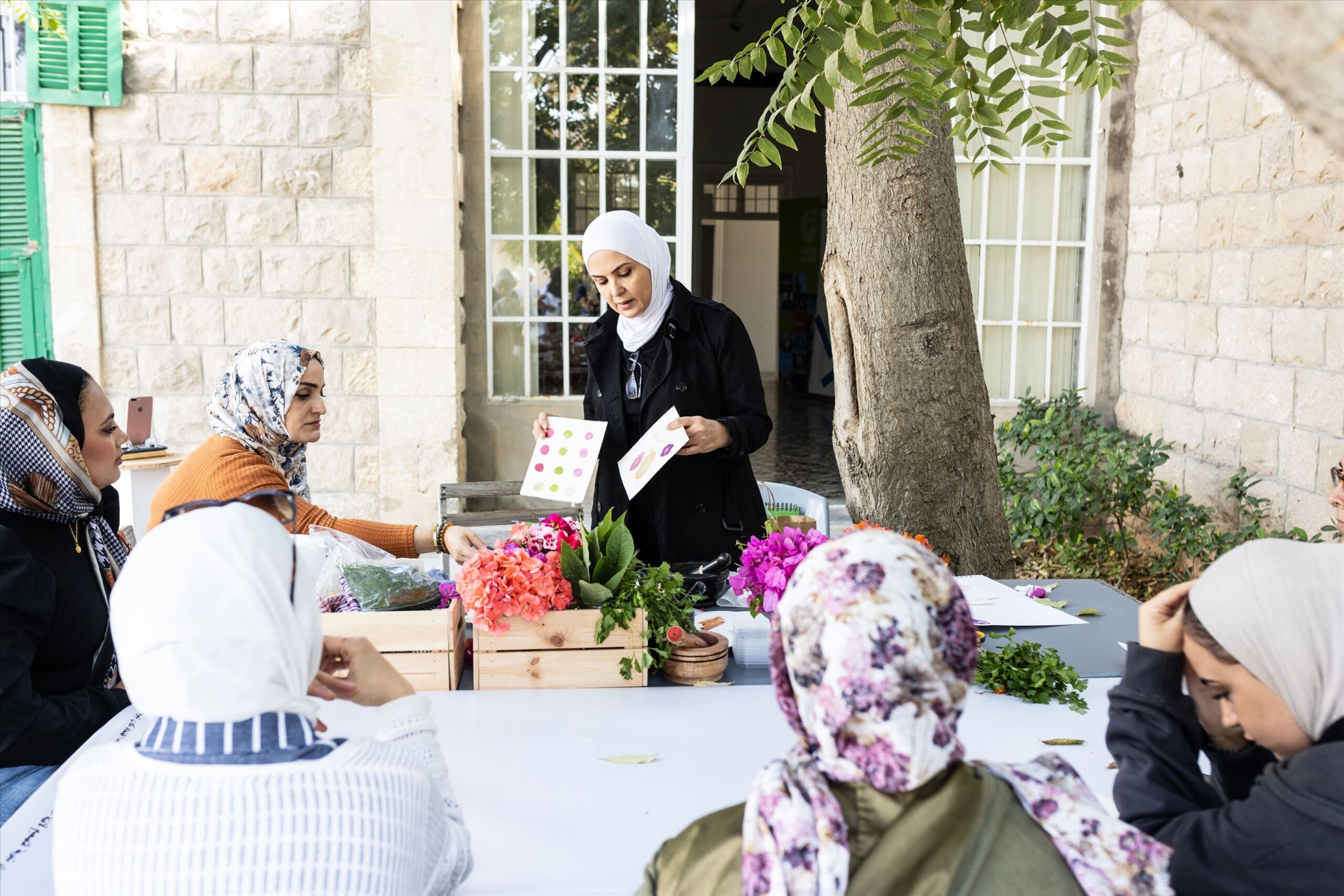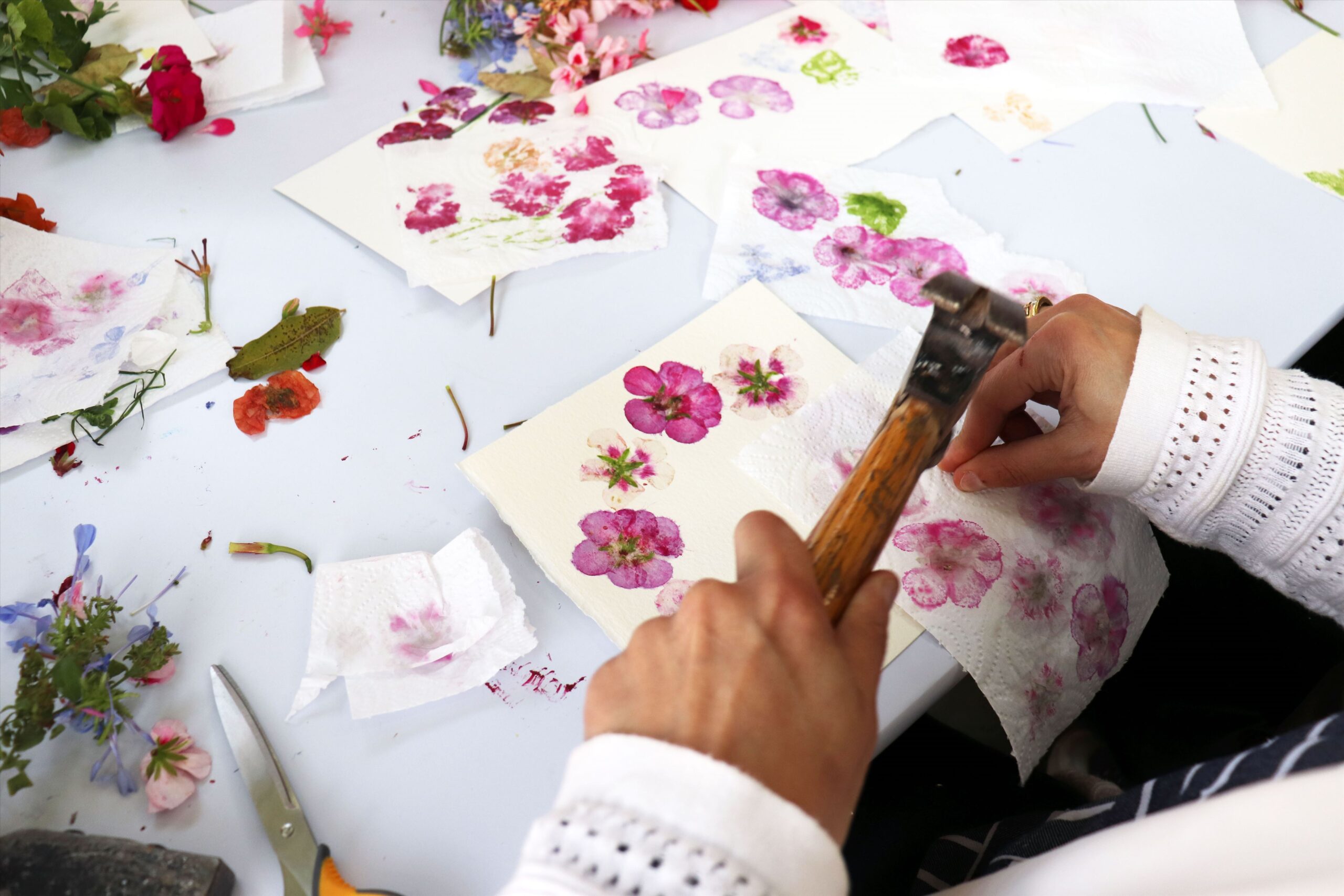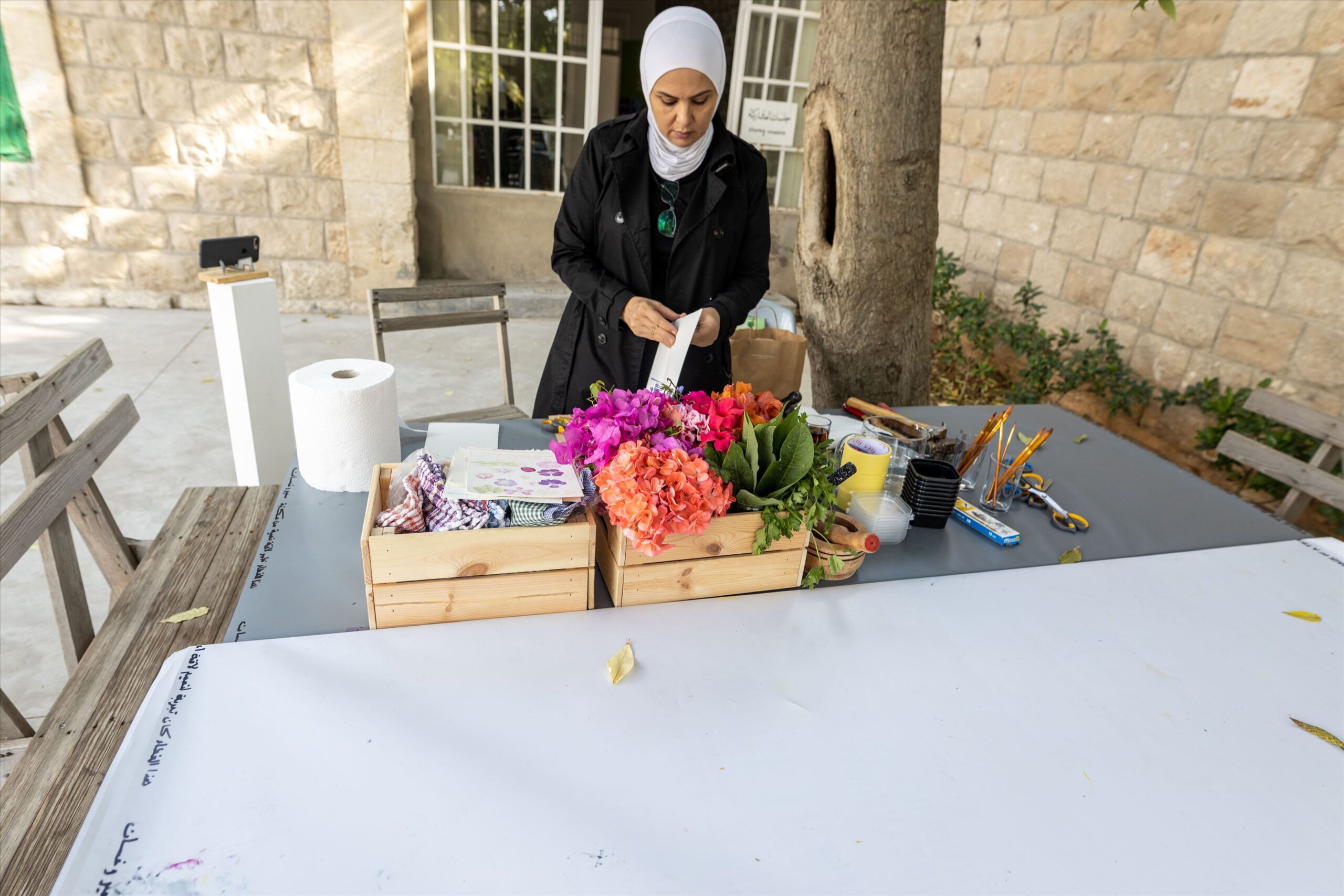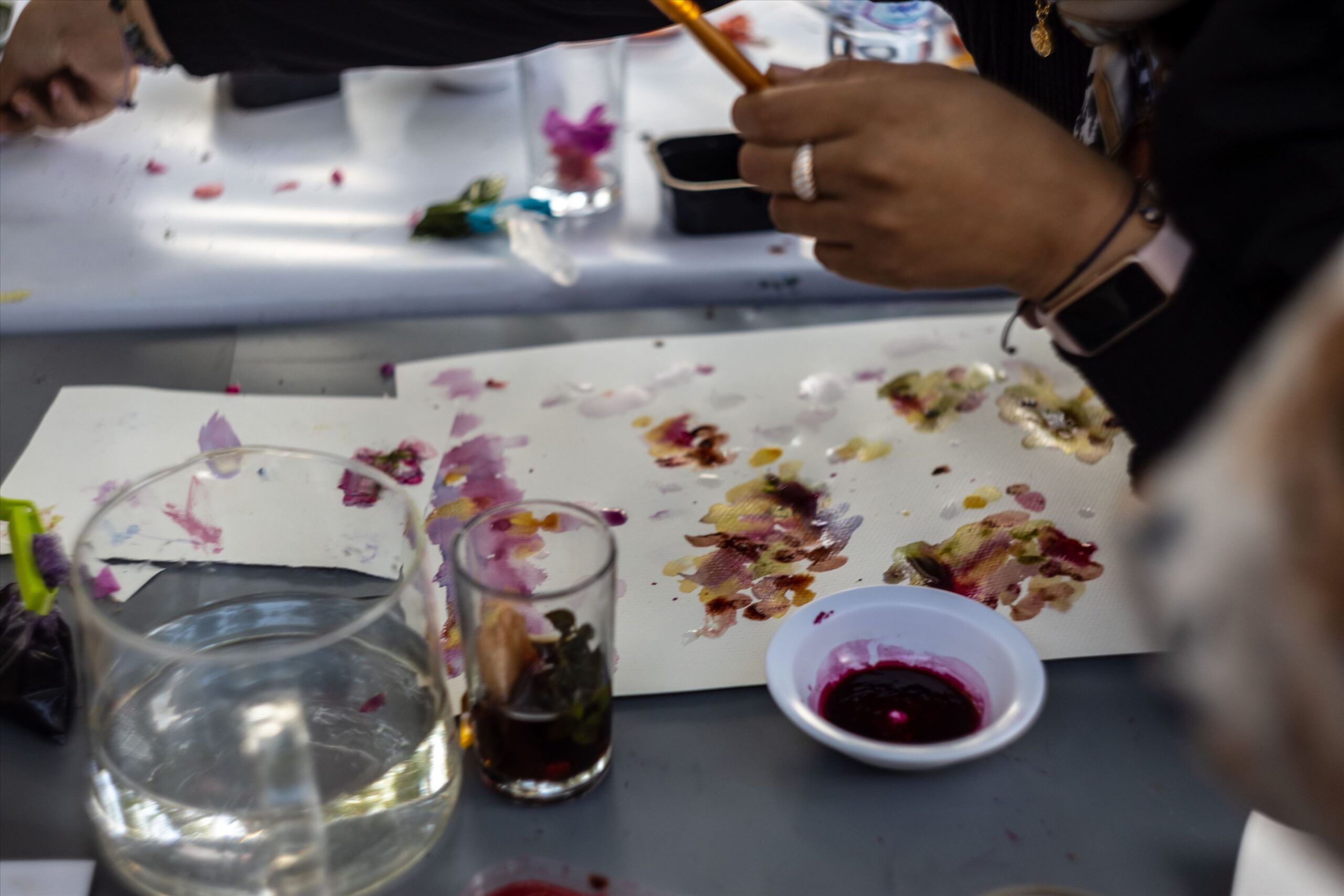الطباعة البيئية
Eco printing
Mai Qaddoura | مي قدورة
تصوير جورج الخوري
Photographs by George Al Khouri
عن التقنية
طباعة الأزهار بالطرق، أو تاتاكيزومي هي تقنية يابانية قديمة لطرق النباتات لخلق أنماط على القماش، وهي تقنية ذات تأثير مباشر، وتقدم نتائج جميلة. كل ما تحتاجه للتطبيق هو زهور وأوراق نباتات نضرة، ومطرقة، وبعض الورق، وقماش الكانفاس، أو قماش لنقل أصباغ الأزهار. ستتمكن أيضاً من استخرج الأصباغ والألوان من الزهور والنباتات لإنشاء عمل فني رائع
عن الفنانة
مي قدورة فنانة مقيمة في عمان تمارس بشكل رئيسي الفن التطبيقي والرسم. حاصلة على درجتي بكالوريوس في الصيدلة (1996)، وفي الفنون البصرية “الرسم” (2022) من الجامعة الأردنية، وهي الآن فنانة متفرغة. تشكل القضايا الإنسانية، وبشكل أكثر تحديداً قضايا المرأة الموضوع الرئيسي في عملها، وتسعى من خلال فنها لتسليط الضوء على هذه القضايا. تستكشف مي المواد والتقنيات لإيجاد طرق جديدة للتعبير عن نفسها
المواد المطلوبة
فرش للألوان مائية –
لوح للألوان المائية –
مقص –
أقلام رصاص –
لفة مناديل المطبخ –
شريط لاصق –
ورق الألوان المائية –
مطرقة –
مناديل ورقية –
هاون ومدقة –
الخطوات
١.ابدأ بجمع الزهور والأوراق الخضراء النضرة بأشكال وألوان مختلفة
٢. جهز محطة العمل الخاصة بك عن طريق تحضير السطح الذي ستعمل عليه. في هذا الدليل، نستخدم ورق الألوان المائية ومطرقة ومقص على الجانب
٣. رتب قصاصات الزهور والأوراق بالتركيب المفضل لديك
٤. قم بوضع الأوراق الخضراء والزهور على ورقة الألوان المائية ثم قم بتغطية جميع المواد بورق المناديل
٥. استخدم المطرقة لاستخراج كل الصباغ على ورقة القوس
٦. اترك الأصباغ تستقر لمدة 15 دقيقة
٧. قم بإزالة المناديل الورقية ببطء وإزالة بقايا المواد العضوية الزائدة من ورق الألوان المائية
٨. بعد مراقبة النتيجة النهائية، يمكنك اعادة الطرق للتوصل إلى مزيد من التفاصيل في التكوين الخاص بك إذا لزم الأمر
About technique
Flower hammering or Tatakizomi is an ancient Japanese technique of hammering plants to create patterns on fabric. It is a straightforward technique that renders stunning results. All we need is fresh flowers and leaves, a hammer, paper, canvas or fabric to transfer the flower dye.
About the artist
Mai Qaddoura is an Amman-based artist who works mainly in installation art and painting. She holds two Bachelor degrees in: BSc. Pharmacy (1996) & BSc. Visual arts/painting (2022) from University of Jordan, and now she’s a full-time artist. A principal theme in her work is humanitarian issues, more specifically women’s issues and through her art I try to shed a light on them. She’s constantly exploring materials and techniques to find new ways to express herself.
Material needed
- Masking tape
- Arch watercolor paper
- Hammer
- Tissue paper
- Stone Mortar and pestle
- Watercolor brushes
- Watercolor pallets or plates
- Scissors
- Pencils
- Kitchen towel roll
Steps & instructions
Flower hammaring
- Prepare the emulsion, by crushing vegetables or fresh flowers petals, leaves, or turmeric..etc into a food processor or using a mortar. You can use filtered water or alcohol to ease the process, just make sure to use small amounts to keep the emulsion’s pigment concentrated.
- Add a coffee strainer in a bowl then add inside the emulsion pulp to extract the pure pigment.
- Using a foam brush tool; apply 3 coats on a hard paper and wait until it dries.Make sure you leave to dry in a dark room
- Bring your positive picture or stencil, leave and add above the coated hard paper
- Add masking tape on the sides and stick/ attach it on hard cardboard or wooden board
- Put it under the sunlight until the color changes
- Remove the positive shape and your artwork is ready.
Natural pigment making
- Start by collecting fresh flower and leaf cuttings or different shapes and colors.
- Put different flower petals and grass in the mortar.
- Hammer in the organic material to extract all pigments into the mortar.
- Add little amounts of water into the mortar to allow the pigment to run.
- Continue hammering and adding more organic material as needed.
- Put crushed plants on the cloth then squeeze.




